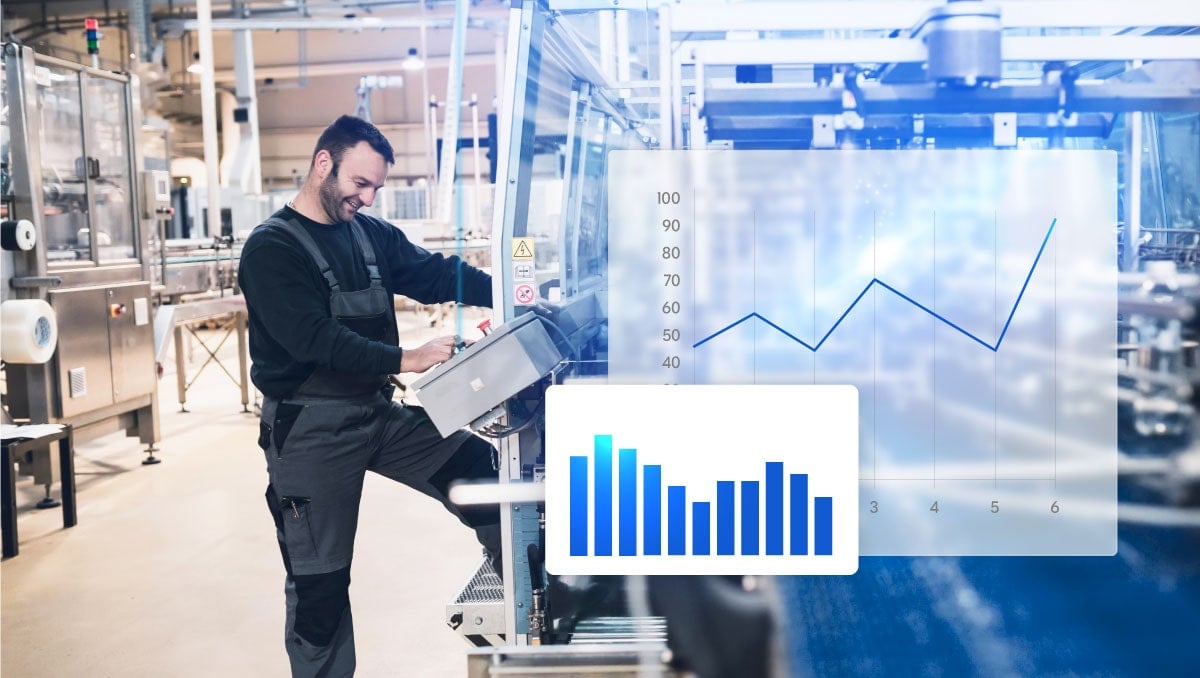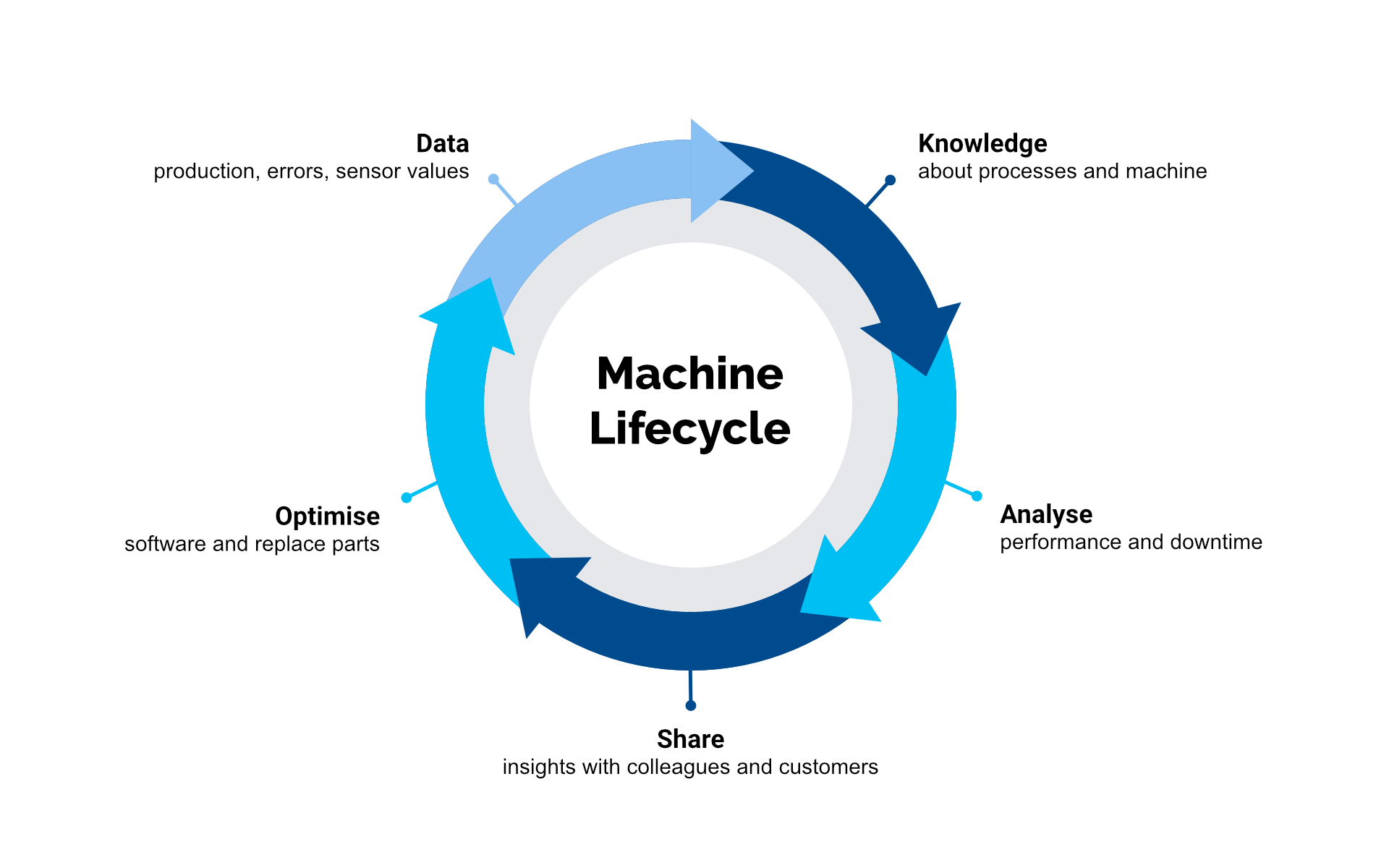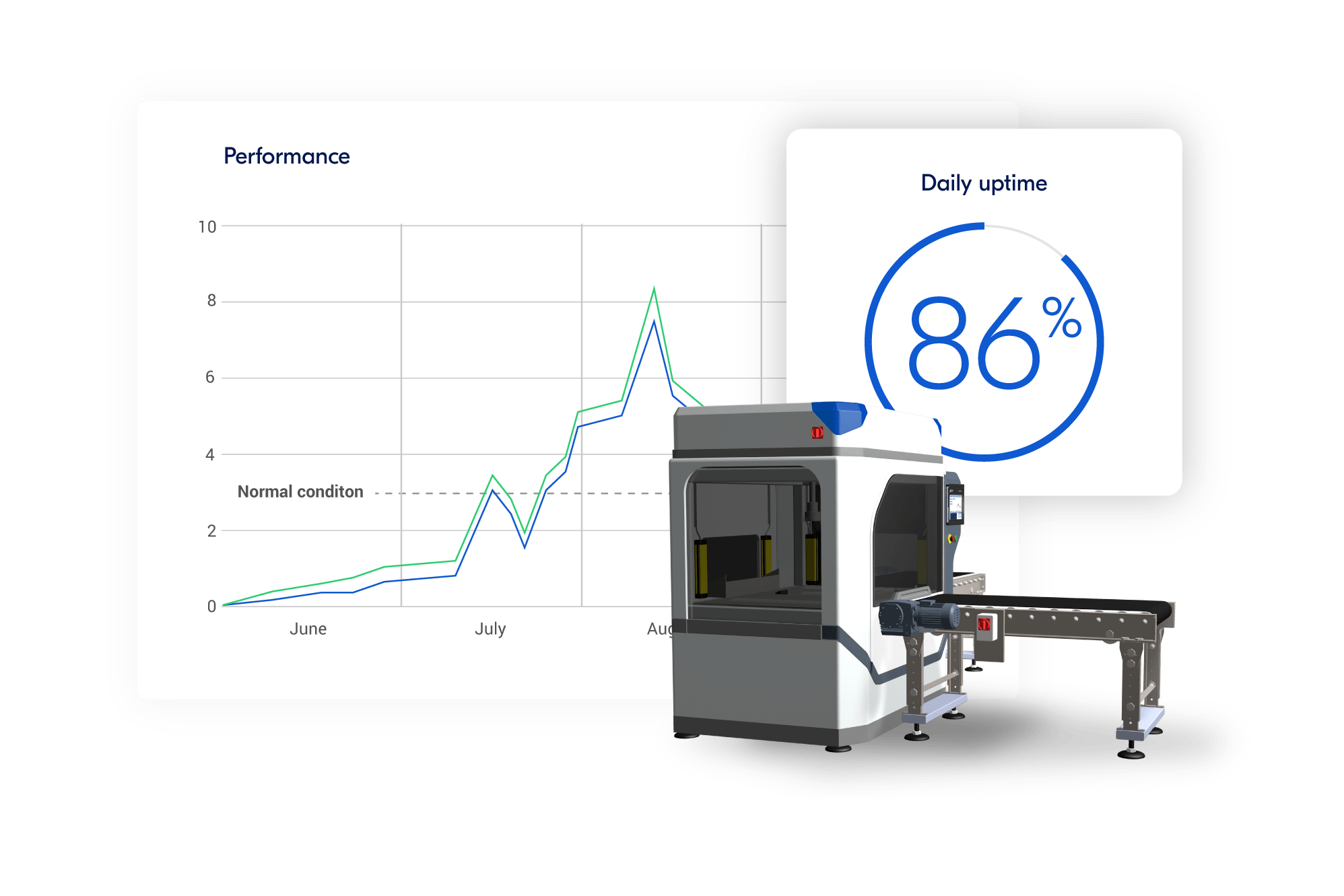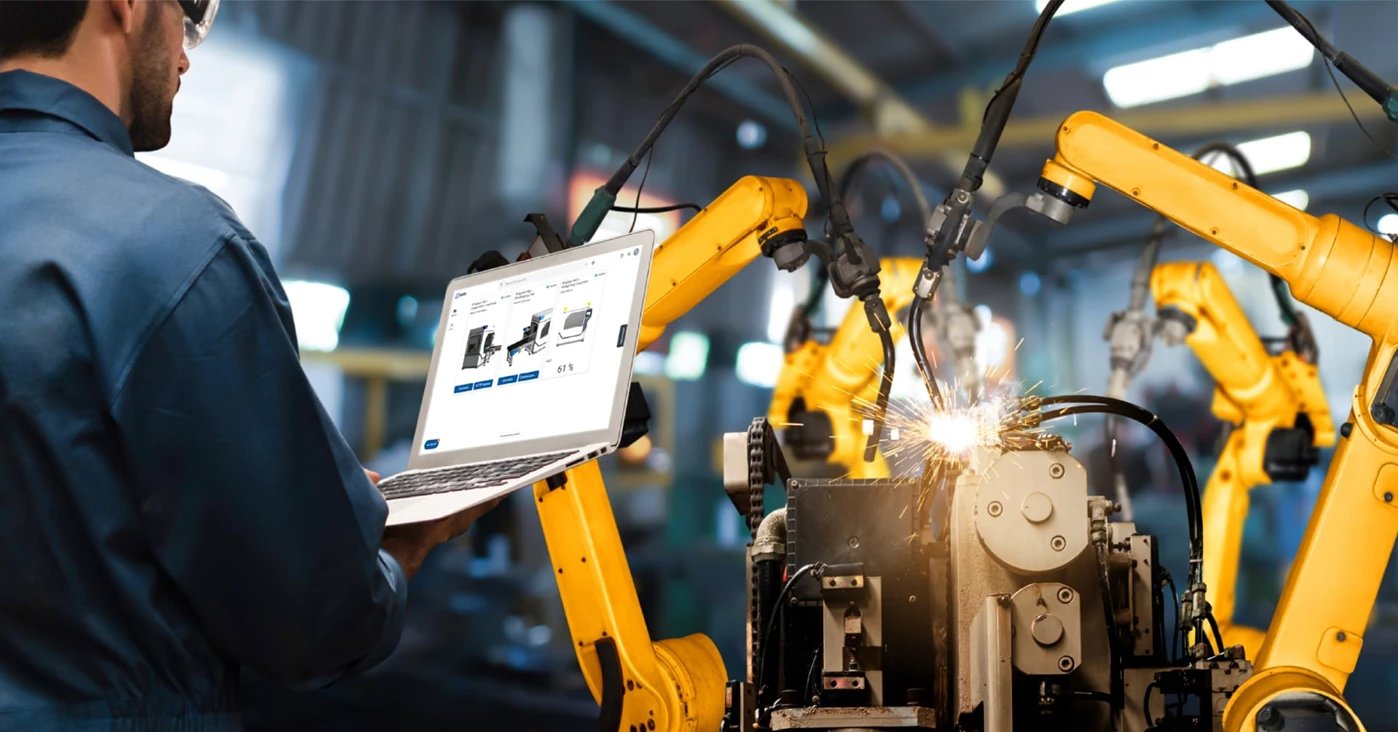- Home
- Knowledge hub
20+ must reads on how to turn machine generated data into valuable insights
4 min. read
Shelly Boom
Getting lost in a pile of machine data and wondering what to do with it? You’re not the only machine builder with this issue. Data is still one of the most underused assets, while it’s becoming increasingly important in the manufacturing industry.
Below you’ll find 5 key topics on data analysis supported by more than 20 articles on how to turn your machine data into valuable insights step by step.
 Collect and analyse machine data to gain valuable insights
Collect and analyse machine data to gain valuable insights
Machine data is revolutionising manufacturing. Collecting and analysing historical or real-time machine data increases your ability to understand what’s happening with your machine and its components. You can gain useful insights about the performance of your machine, optimise its productivity accordingly and act faster when an error occurs. It’s all about driving innovation. Additionally, you will keep up with your competitors and offer added value to your customers by sharing information about your machines with them.

First things first: start with a clearly defined problem and design your questions to qualify potential solutions to that problem. Then determine what you want to get out of your data, but also why and how by means of a data strategy. If you’re collecting data manually ‘just because’ without knowing the purpose of it, that’s not the way to go. However, if you don’t have an idea of what to collect, you can start with data logging to get insights in what could be interesting to track, for example:
To get a clear overview of what happens in your machine, it’s important to visualise your data. An Industrial IoT platform is a useful tool for storing data and creating data dashboards. Take a look at your gathered data and determine how you can use them to their benefit and for what purposes. Based on that, you add certain parameters to your dashboard.
 Monitor machine performance to make improvements to new machines
Monitor machine performance to make improvements to new machinesYour machine’s PLC generates huge amounts of data, such as statuses, modes and speeds, but has often limited storage and is only accessible for engineers. It´s therefore desirable to collect your data centrally, for example in a cloud environment, for analysing purposes. The steps you can take to start collecting data:
Since there are different ways to get data from your PLC and also a couple of steps to take, the following articles will help you get on your way.
The challenge is to turn your gathered machine data into valuable insights. To perform data analysis, you have to get clear insights into your machine data and thus it’s essential to visualise your data in real-time or historical machine dashboards with graphs, gauges and tables.
Then the first step of your analysis is to get descriptive information from your data by looking at your data dashboard and determining what happened in your machine. You may see that your machine stopped working at a certain point. As a second step, you’re going to dig into the root cause of this downtime, so you can do something about it when it happens again. In addition, you can try to find patterns to predict what’s going to happen, so you can prevent errors from happening in future machines and switch from reactive to proactive maintenance.
Afterwards it's time to interpret your results by asking yourself a couple of questions:
Of course, you want to use your machine data insights to optimise your machine, to reduce downtime and for maintenance purposes. However, there are plenty of other options to put these valuable insights to use. Think of predictive maintenance, machine learning or artificial intelligence.
Would you like to generate recurring revenue? Tap into new business models, such as condition monitoring of wear and tear parts, a smart consumables strategy or predicting critical part breakdown. Offer your customers extra services to increase customer satisfaction and ask for an additional fee to gain more profit.
 Learn from your machines and offer additional services to your customers
Learn from your machines and offer additional services to your customersIn which phase of IIoT maturity are you? Is data already being gathered, but are you just not sure what to do with it and where to start? Are you still working on getting your machines connected? Or are you one step further and ready to predict what’s going to happen to your machines? Discover in which phase you are and which steps to take next in the white paper: the road to IIoT maturity in machine manufacturing.
Receive industry news, the latest updates on IXON products and their new features directly in your inbox with our monthly newsletter, and stay on top of market trends and information.